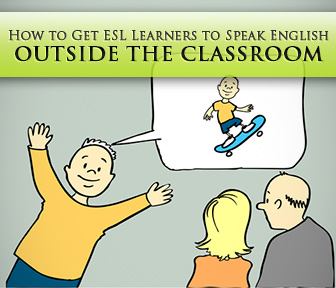If You Canít Beat Emí, Join 'EmÖ on Facebook! Using Social Media in the Classroom


From the late 1990s to 2008, the number of ESL students jumped about 60% to nearly 5 million, according to the National Center for Education Statistics (NCES). That represented about 10% of the total student population.
Although the ESL population includes youngsters from countries around the world, the majority (65%) were born in the United States to immigrant parents with limited English skills. As a result, ESL students face unique challenges in school and often don’t have the level of support at home that other students do. Not only are they tasked with learning a new language, at the same time they also are expected to perform well academically and keep up with content in this new language.
Such challenges have been reflected in standardized test scores. Among fourth-graders nationwide, 36% of native English speakers scored at or above proficiency in reading in 2009, while only 6% of English learners scored at a similar level, according to the NCES.
One of the most effective ways for ESL teachers to assist their students in developing English fluency is to encourage them to speak English outside the classroom. This is not always an easy task, as many ESL students live in non-English speaking households and often socialize with friends who also speak the same native language. However, when teachers provide opportunities to use English in an engaging and meaningful way, ESL learners will naturally be more motivated to take risks and explore the language because it is relevant to their personal experience.

Often, the less-structured environment of extracurricular activities such as clubs and sports teams is a great arena in which to motivate ESL students to use the language. The low-pressure environment lets youngsters practice communicating in English in a hands-on, interactive way. They don’t have to worry about being graded or tested and their motivation levels may be higher because they are engaged in an activity they enjoy. In interacting with English-speaking peers, ESL students can find common ground on which to share stories through the use of language.
Social media networks can help teachers and students interact in English outside the classroom. If appropriate in terms of students’ maturity levels, the use of Facebook, Twitter and other social networks allows teachers and students to engage in discussion about assignments, events and other topics pertaining to English. Social media sites and their accompanying networking tools can broaden students’ awareness and knowledge of English, as well as build their confidence and boost their motivation to become more fluent. For today’s youngsters – the so-called “digital generation” – social media is in many ways their “real world,” and its use can help them build their vocabulary. Of course, there are caveats when it comes to social media. Parental permission must be obtained before embarking on lessons using social media, and students’ social network activities must be continuously monitored and reviewed.
For a variety of reasons, parents of ESL students may not be as involved in their child’s education as a teacher may wish. This could be due to hurdles such as limited English proficiency and cultural differences. Teachers can seek to overcome these obstacles and encourage involvement in a number of ways, such as having a bilingual interpreter available at parent meetings and other school events. Also, any written communications should be translated into the family’s first language. Another way to help familiarize parents with the school system is to hold a workshop early in the school year that welcomes them and informs them of academic goals and expectations.
Field trips have always been a favorite part of any child’s school year and the practical nature of an outing can be especially beneficial to ESL students. For example, the American Museum of Natural History in New York City has offered a Science Literacy Program for Grade 6 English Language Learners. The program allows students to interact with scientists and engage in hands-on activities designed to pique their science curiosity and encourage language use.
These four options represent just a small sampling of the wide variety of activities that teachers of English as a Second Language can incorporate into their classroom toolkit in order to encourage students to speak English outside the classroom.
This guest article was provided by Paul Warren. Paul is an education professional and a writer for University Alliance and Dominican University online. Dominican University offers an online esl masters program.